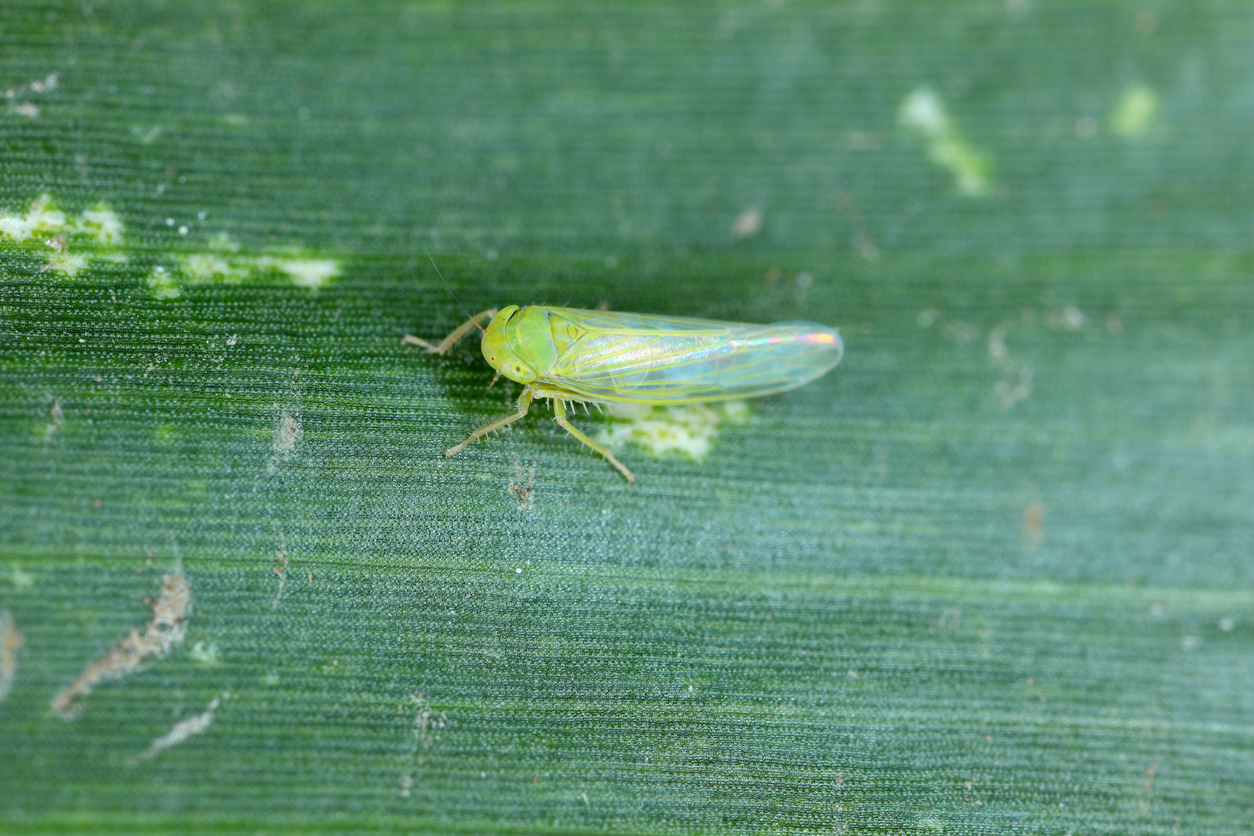K-State plant pathologist says the pest and disease have been spotted in 26 counties since September
Growers in Kansas have detected corn leafhoppers in fields across the state, said Kansas State University plant pathologist Rodrigo Onofre, noting they transmit a devastating pathogen called corn stunt spiroplasma.
“Corn stunt has been in the United States for a while – Texas, Louisiana, California, Florida,” he said. “However, we have never seen this disease – or the corn leafhopper – this far north in states like Kansas, creating a twofold problem for producers.”
Corn stunt
New scouting reports have confirmed positive cases of corn stunt stretching from southwest counties like Seward and Grant to northeastern areas of the state such as Brown and Doniphan counties.
Corn stunt impacts sweet and field corn by hindering early plant growth, damaging ears and changing leaf color.
“Late in the growing season, plants will go from green to red/purple in about 30 days after the infection happens,” Onofre said. “When you snap out an infected ear, you will see a sugar accumulation, and the plant is responding by turning purple.”
He added: “If the infection happens early in the season, producers might have shortened internodes (the spaces between nodes on a plant’s stem), which results in ‘stunted’ plants.”
According to Onofre, late-planted and double-cropped fields have received the brunt of the damages caused by corn stunt.
“Producers tell me they have lost several bushels per acre under severe disease conditions,” he said. “Fields planted later in June in central Kansas are especially at risk of getting hit by this disease.”
Onofre said controlling corn stunt starts with mitigating the number of corn leafhoppers in a field, noting that fungicides are ineffective because the disease is a bacterial pathogen.
To test suspected corn plants, green, symptomatic leaves should be sent to the K-State Plant Disease Diagnostic Lab.
Corn leafhoppers
Leafhoppers – the white-colored pest responsible for vectoring corn stunt – can be identified by dark spots between their eyes and a V-shaped marking on their thoracic segment.
This pest emerges during warmer temperatures (80-90 degrees Fahrenheit) every 2-3 days, completing their life cycle shortly after.
“The adults can survive between 30-80 days, and the females can lay around 15 eggs per day and up to 600 eggs in their life cycle; they can reproduce fast,” Onofre said.
While leafhopper control may be difficult due to their prolific nature, Onofre recommends treating infestations with insecticides and preventing future events by planting leafhopper-resistant corn varieties.
“When talking about an insect, management is difficult, so treatment thresholds are minimal,” he said. “Right now, one leaf hopper spotted in a field requires treatment. A grower could have multiple insecticide applications within one season if this becomes an extreme problem.”
Growers can direct questions about corn leafhoppers to K-State entomologist Anthony Zukoff at 620-275-9164 or [email protected].
More information on the pest is available in the Oct. 3 Agronomy e-Update newsletter, published weekly by K-State’s Department of Agronomy.
PHOTO: Tiny leafhopper on a corn leaf. (iStock – Tomasz Klejdysz)




